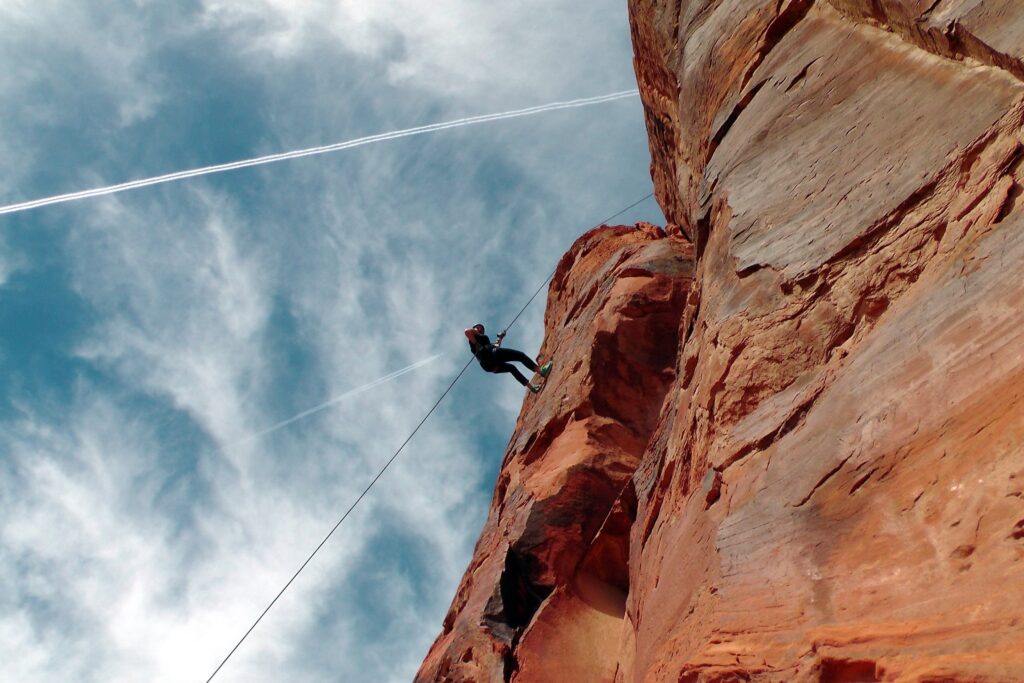Extreme sports and adventure activities like skydiving, mountaineering, and white water rafting have become increasingly popular in recent years. These activities can provide an intense adrenaline rush, a sense of accomplishment, and opportunities for personal growth and social connection. However, they also carry significant risks, including the potential for serious injury or even death. This post will explore the psychology of extreme sports and adventure activities, their pros and cons, and how to mitigate the risks.
The Psychology of Extreme Sports and Adventure Activities
People are drawn to extreme sports and adventure activities for various reasons, including sensation-seeking and risk-taking behavior, flow state and focus, challenge and achievement, and social identity and belonging. Let’s take a closer look at each of these factors.
Sensation-seeking and risk-taking behavior
Some individuals are motivated by the need for new and intense experiences, which can be fulfilled by engaging in extreme sports and adventure activities. This personality trait is often associated with risk-taking behavior and a desire for excitement.
Flow state and focus
Many extreme sports and adventure activities require a high level of focus and concentration, which can lead to a state of flow or “being in the zone.” This state is characterized by complete absorption in the activity, a sense of control, and a loss of self-consciousness.
Challenge and achievement
Engaging in extreme sports and adventure activities can provide a sense of accomplishment and mastery as individuals push themselves to overcome physical and mental obstacles.
Social identity and belonging
Some people may identify strongly with a particular, extreme sport or adventure activity, which can provide a sense of belonging and community with like-minded individuals.
The Pros of Extreme Sports and Adventure Activities
Extreme sports and adventure activities can provide various benefits, including a sense of accomplishment and personal growth, an adrenaline rush, and opportunities for social connection.
Sense of accomplishment and personal growth
Engaging in extreme sports and adventure activities can challenge individuals to push beyond their comfort zones, confront their fears, and develop new skills and abilities. These activities can provide opportunities for personal growth and development as individuals are forced to confront their limitations and overcome obstacles.
Adrenaline rush
Engaging in extreme sports and adventure activities can provide an intense adrenaline rush, which can be highly addictive and motivating for some individuals. This rush can be a powerful and positive experience, providing a sense of excitement and vitality.
Opportunities for social connection
Participating in extreme sports and adventure activities can provide a sense of community and connection with like-minded individuals with similar interests. This sense of belonging can be significant for those who feel isolated or disconnected from others.
The Cons of Extreme Sports and Adventure Activities
However, extreme sports and adventure activities can also have significant risks. These activities can be expensive, inaccessible to some due to financial or other barriers, and strain relationships with those who do not share the same interests or level of risk tolerance.
Furthermore, extreme sports and adventure activities carry a significant risk of injury or death, particularly for those not properly trained or experienced. Additionally, these activities can reinforce a pattern of risky behavior, leading individuals to take greater risks in other areas of their lives.
Risk of injury or death
Engaging in extreme sports and adventure activities carries a significant risk of injury or even death. These activities often involve physical challenges, such as navigating steep terrain, jumping out of airplanes, or navigating rapids, which can be dangerous and unpredictable.
High cost and accessibility barriers
Extreme sports and adventure activities can be expensive, requiring specialized equipment and training, which may make them inaccessible for some people. Additionally, these activities may be limited by geographic location or require travel, which can add additional costs and barriers.
Potential impact on relationships
Engaging in extreme sports and adventure activities can put a strain on relationships, particularly for those who do not share the same interests or level of risk tolerance. This can create tension and conflict, especially if partners or family members worry about the safety risks.
Reinforcing risky behavior
Engaging in extreme sports and adventure activities can reinforce a pattern of risky behavior, leading individuals to take greater risks in other areas of their lives. This can be particularly concerning for young people or those susceptible to addiction or impulsive behavior.
How to Mitigate the Risks of Extreme Sports and Adventure Activities
It’s important to take proper precautions, such as seeking out proper training and guidance, using appropriate safety equipment, and being mindful of personal limitations and boundaries. Here are some specific steps individuals can take:
Seek out proper training and guidance
Before engaging in extreme sports or adventure activities, individuals should seek proper training and guidance from experienced professionals. This can include taking courses, working with experienced guides, or getting certified in specific skills.
Use appropriate safety equipment
Appropriate safety equipment, such as helmets, harnesses, and life jackets, can significantly reduce the risk of injury or death. Individuals should always use the appropriate safety equipment for the activity they are engaged in and make sure that the equipment is in good condition.
Be mindful of personal limitations and boundaries
It’s important, to be honest with oneself about personal limitations and boundaries. Individuals should never engage in activities beyond their skill level or comfort zone and should never feel pressured to do something unsafe or uncomfortable.
Final Thoughts
Extreme sports and adventure activities can provide an intense thrill and opportunities for personal growth and social connection. However, they also carry significant risks that should not be taken lightly. Understanding the psychology and pros and cons of these activities is essential to making informed decisions and prioritizing safety when engaging in them. By taking appropriate precautions and being mindful of personal limitations and boundaries, individuals can safely enjoy the many benefits that extreme sports and adventure activities have to offer.









Reader Interactions